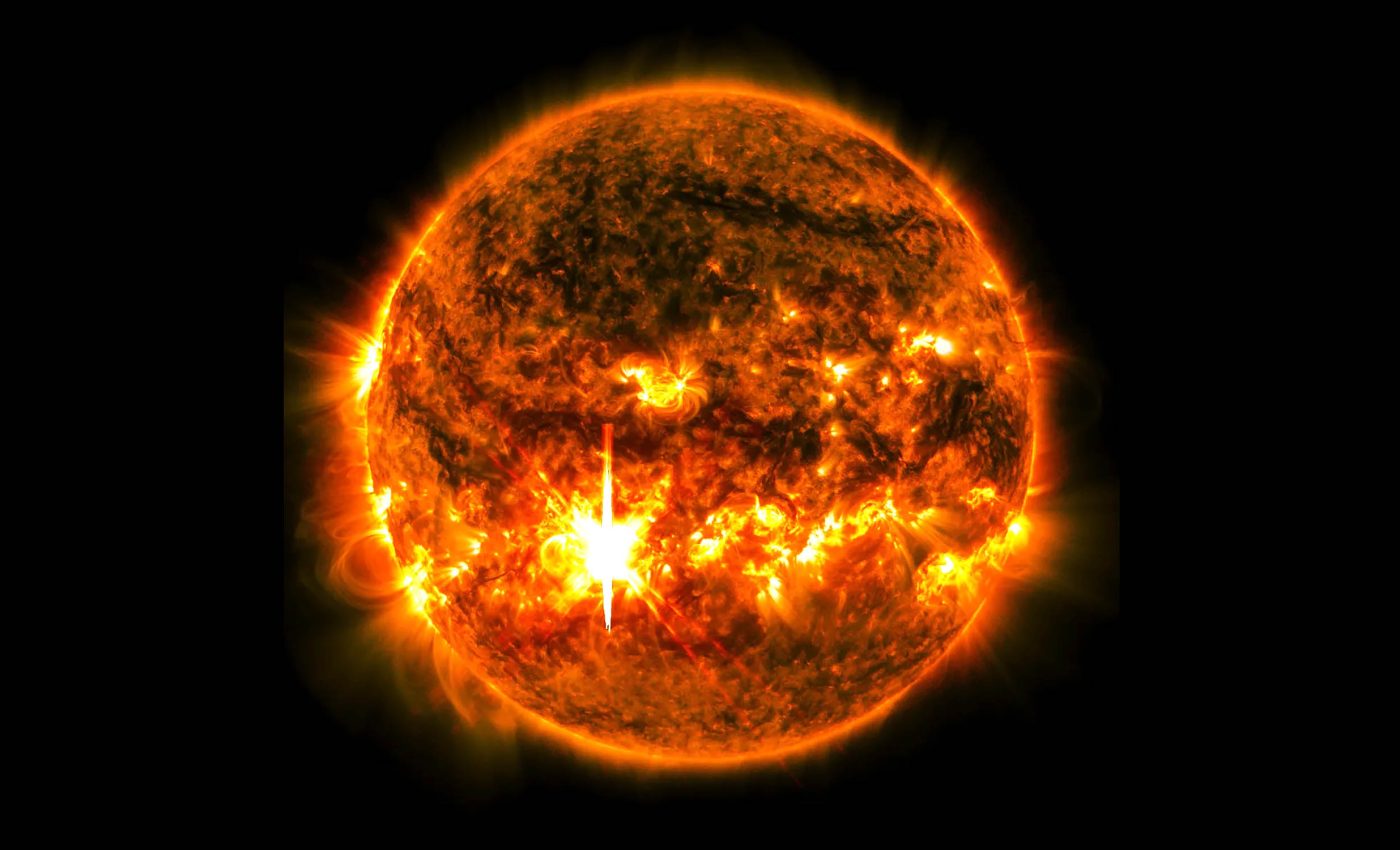
Second strongest solar flare since 2019 prompts geomagnetic storm alert
On October 1, 2024, the Sun put on quite a show. A powerful X7.1 solar flare erupted from its surface, marking the second most intense flare we’ve seen in Solar Cycle 25 so far.
Around 6:20 p.m. Eastern Time, an X7.1-class solar flare burst out from an area known as Active Region 3842 on the Sun.
NASA’s Solar Dynamics Observatory (SDO), which keeps a constant watch on our star, captured some amazing images of this event, including the one you see featured in this article.
The GOES-16 satellite also picked up the flare with its X-ray Sensor. Even though the flare was brief, it packed a punch — scientists call this kind of quick, intense flare “impulsive.”
There are also reports from U.S. Air Force solar observatories hinting that a coronal mass ejection (CME) might be linked to this flare.
A CME is basically a big bubble of gas and magnetic field that gets ejected from the Sun’s corona, and it can have some interesting effects on Earth’s magnetic field.
Breaking down solar flare classifications
Solar flares get classified using letters and numbers. The categories are A, B, C, M, and X. Think of A as the smallest and X as the biggest.
Each step up means the flare is ten times stronger than the one before it. Within each letter category, numbers from 1 to 9 give us more detail about the flare’s strength.
So, an X-class flare is about as intense as they come, and an X7.1 flare is seriously strong. Just for context, the only flare stronger during this solar cycle was an X8.7 flare back on May 14, 2024.
These big flares can really shake things up in space weather, which can, in turn, affect us here on Earth.
What do solar storms mean for Earth?
Solar flares and CMEs can mess with Earth’s magnetic field. This can lead to things like:
- Radio Blackouts: High-frequency radio signals might get wonky or drop out entirely, which isn’t great news for pilots and sailors relying on them.
- GPS Issues: GPS signals could become unreliable for a bit, which might affect navigation systems.
- Satellite Problems: Satellites could experience glitches due to the increased radiation, potentially affecting TV broadcasts, weather data, and other services we count on.
- Power Grid Hiccups: In really extreme cases, power lines and transformers could overload.
- Higher Radiation Exposure: Astronauts and even flight crews at high altitudes might get exposed to more radiation than usual.
- Awesome Auroras: On the upside, we might see the Northern and Southern Lights further away from the poles than we usually do.
Heads up from NOAA
Because of the potential CME associated with this flare, the National Oceanic and Atmospheric Administration’s (NOAA) Space Weather Prediction Center (SWPC) has issued Geomagnetic Storm Watches for October 3 to 5, 2024.
Basically, they’re saying that conditions are ripe for geomagnetic storms when the solar material from the flare reaches us.
The latest space weather forecast
Here’s the lowdown from NOAA’s latest forecast:
- Solar Activity: Things are pretty active up there right now. They expect more moderate flares, and there’s a slight chance we could see another strong one between October 2 and 4, 2024.
- Energetic Particles: Electron levels should stay normal to moderate. Proton levels are expected to hang out in the background unless another big flare pops up.
- Solar Wind: The solar wind is steady, cruising around 420 kilometers per second. No big changes are expected in the next couple of days.
- Geomagnetic Field: Earth’s geomagnetic field has been quiet. It should stay that way unless the CME hits us as predicted, which could stir things up a bit.
Stay in the loop
If you use GPS, rely on radio communications, or depend on satellite services, it’s a good idea to keep an eye on updates.
NOAA’s Space Weather Prediction Center is a solid place to get the latest info on what’s happening with the Sun and how it might affect us.
To sum it all up, this X7.1 solar flare is a strong reminder of just how dynamic our Sun can be. It’s exciting stuff for scientists and anyone who loves watching the skies.
But it’s also a good time to be aware of how these solar events can impact our everyday lives.
Stay tuned for updates, and maybe take a peek outside at night — you might catch the auroras putting on a spectacular show further south than usual.
—–
Like what you read? Subscribe to our newsletter for engaging articles, exclusive content, and the latest updates.
Check us out on EarthSnap, a free app brought to you by Eric Ralls and Earth.com.
—–













